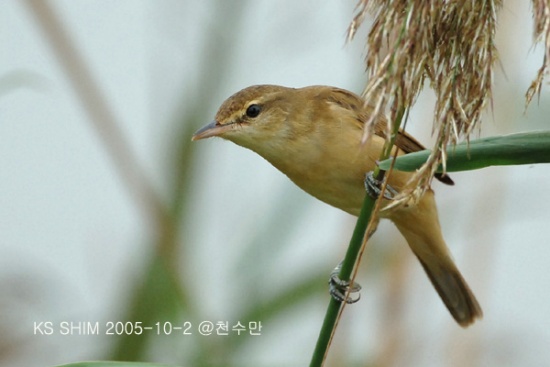- Acrocephalus orientalis
Identification
18·5 cm
- Brown upperparts
- Lighter rump
- White underparts
- Brown flanks and undertail-coverts
- Narrow grey streaks on throat and breast
- Dark eyestripe
- Whitish supercilium
- Dark loral patch
- White tips to the tail feathers
- Long, heavy bill is brown above and pink below
- Bright orange gape
- Grey feet
Distribution
Asia: found from south-eastern Siberia to northern China; winters southern Asia, northern Australia and the Philippines
Taxonomy
A recent split from Great Reed Warbler; this is a monotypic species[1].
Habitat
Reedbeds and can also be found in coastal marshes, paddy fields, riversides, lakes, estuaries, grassland and scrub.
Behaviour
Diet
Diet includes insects, spiders, small water snails and other small invertebrates.
Breeding
The nest is built in amongst the reeds about 1-1.5 metres above the ground. The clutch of 2-6 eggs is incubated for 12 to 14 days. The young birds fledge about 10 to 15 day later.
References
- Clements, J. F., T. S. Schulenberg, M. J. Iliff, D. Roberson, T. A. Fredericks, B. L. Sullivan, and C. L. Wood. 2014. The eBird/Clements checklist of birds of the world: Version 6.9., with updates to August 2014. Downloaded from http://www.birds.cornell.edu/clementschecklist/download/
- Handbook of the Birds of the World Alive (retrieved April 2015)
- Wikipedia
Recommended Citation
- BirdForum Opus contributors. (2025) Oriental Reed Warbler. In: BirdForum, the forum for wild birds and birding. Retrieved 3 April 2025 from https://www.birdforum.net/opus/Oriental_Reed_Warbler
External Links




